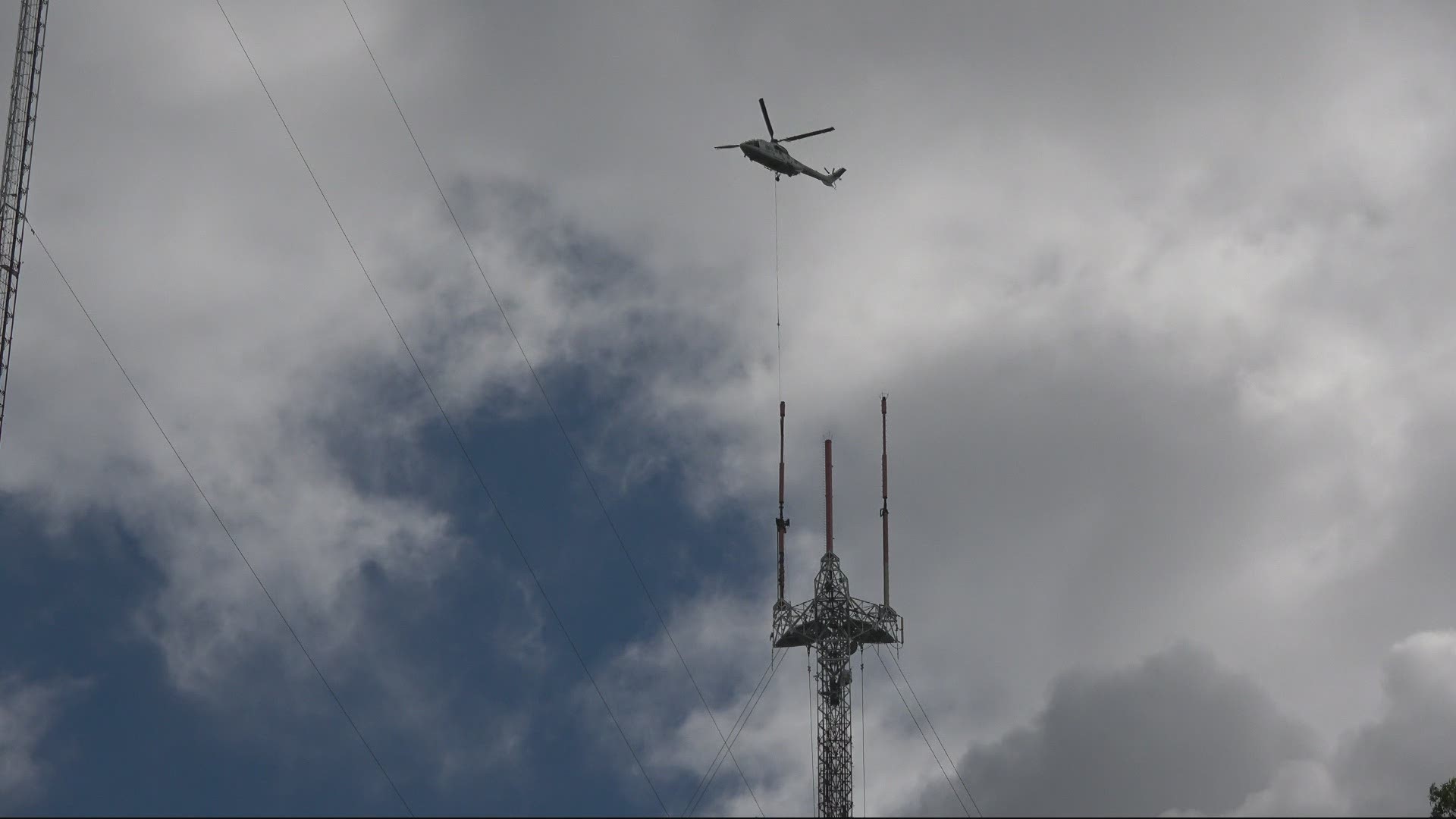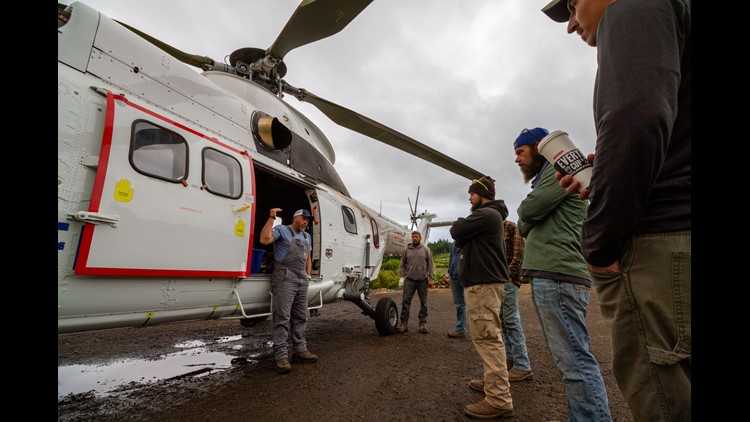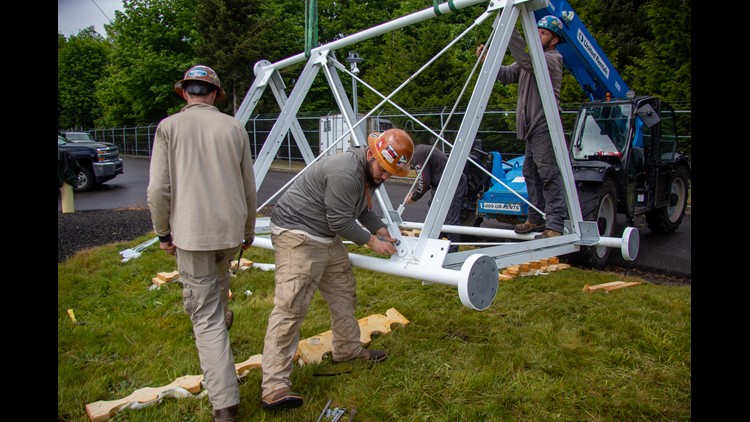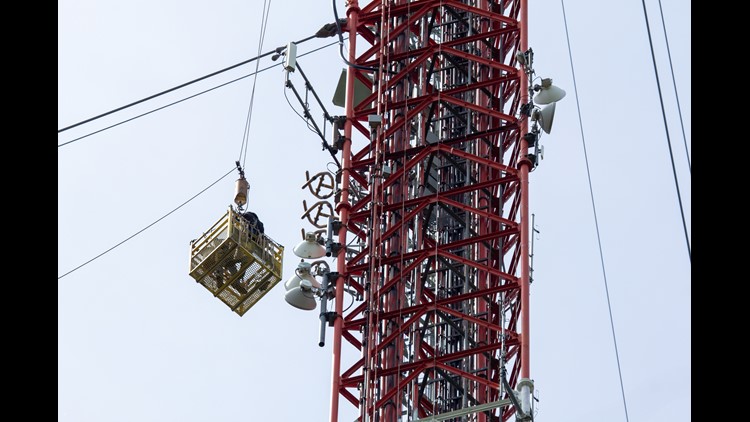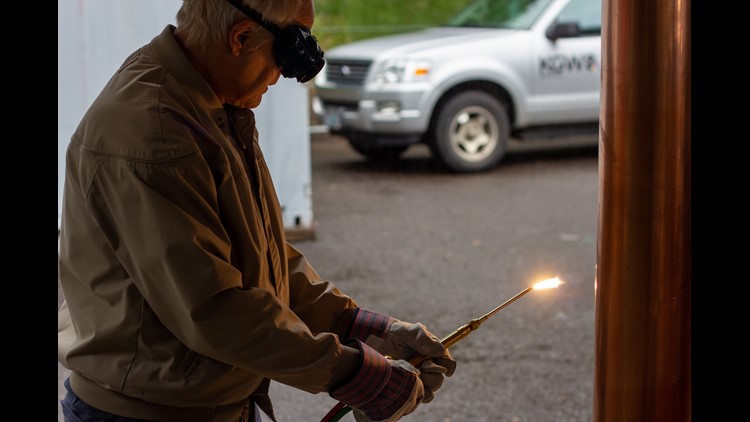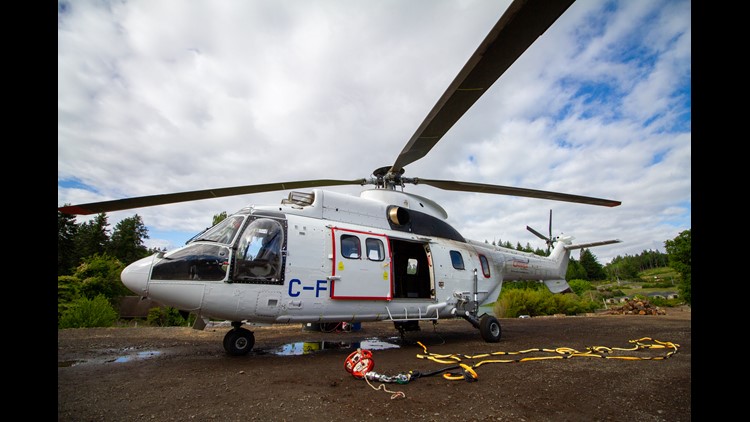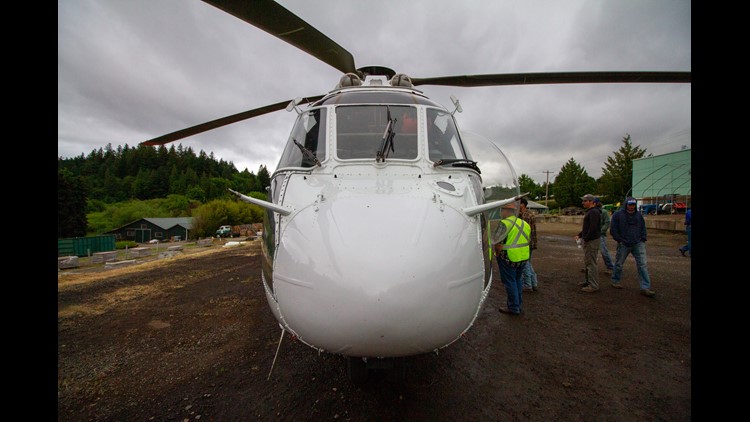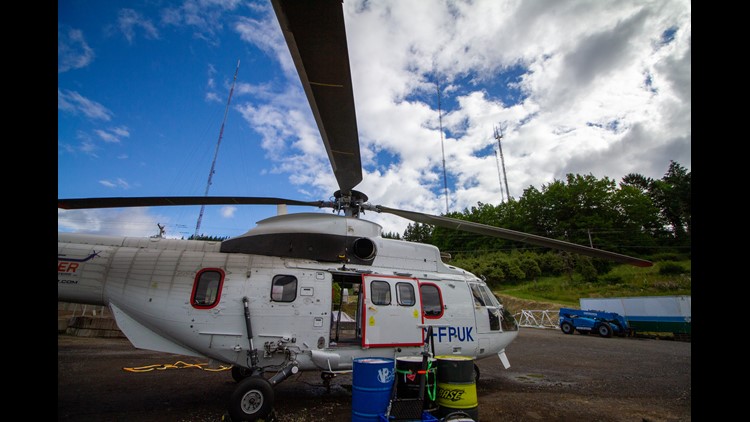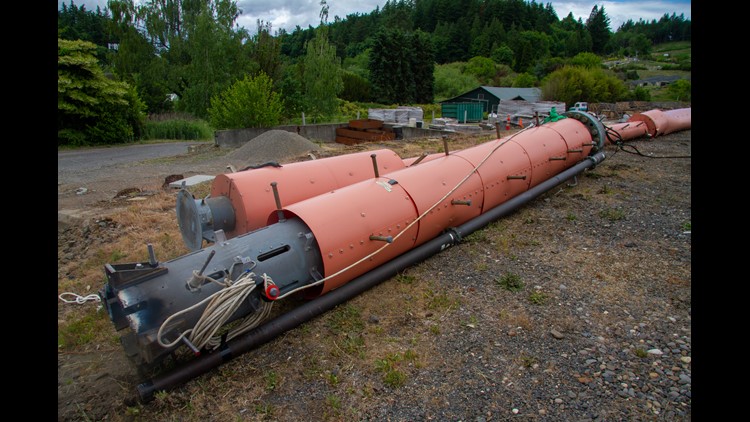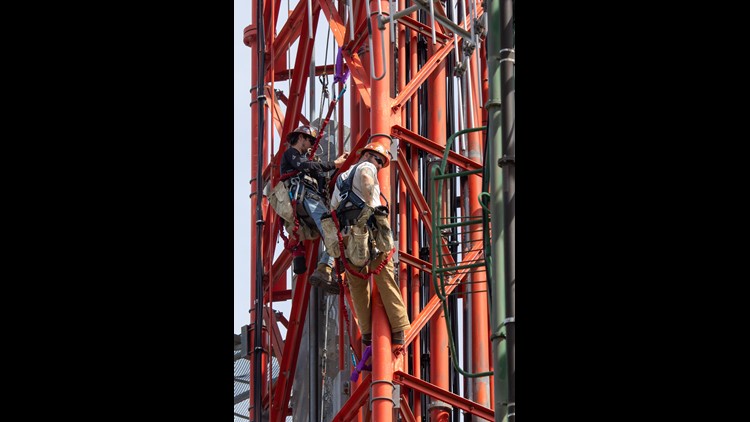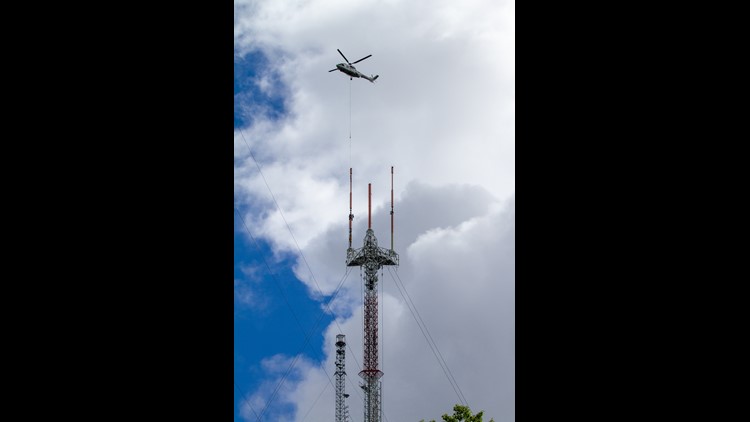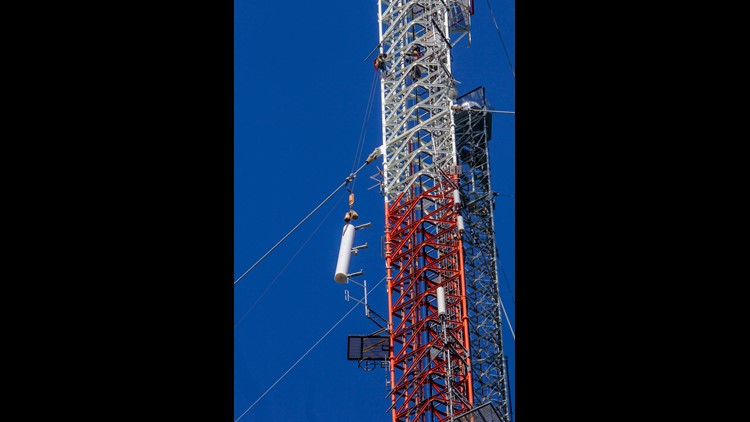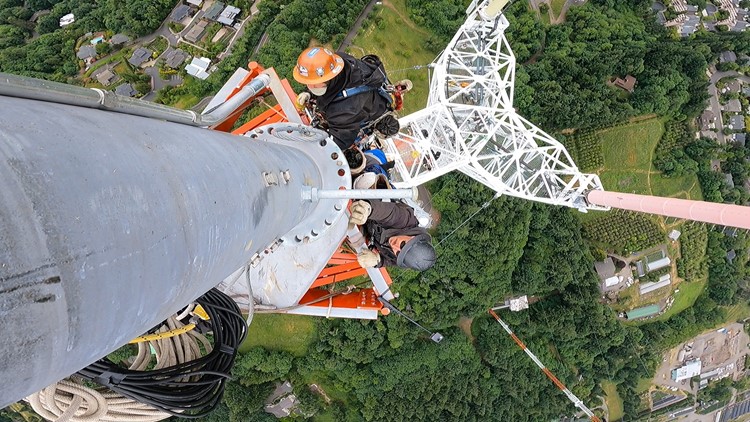OREGON, USA — UPDATE 7/22/2021:
We identified another transmitter transmitting on KGW's frequencies. This has now been shut off. We are hopeful that this will solve any reception issues you might have experienced over the last few weeks. We are now receiving positive reports from many viewers. Thank you for your patience over the last few weeks.
If you watch KGW with an over-the-air antenna or use a digital converter box, this article is for you.
At 12:01 on July 16, KGW switched from a Very High Frequency (VFH) signal to an Ultra High Frequency (UHF) antenna.
This new Ultra High Frequency (UHF) antenna will improve the quality of the picture for all of your favorite programming on KGW. Additionally, you might even find a few more free channels.
This signal upgrade is free for anyone who uses an over-the-air antenna or a digital converter box and just takes a quick rescan of your TV, but you must have a UHF compatible antenna. This will not impact anyone who watches KGW using cable, satellite or a streaming platform.
RELATED: KGW has a new app! Download it here
How do I rescan my TV?
It sounds complicated, but it’s just a few quick and easy steps to rescan your TV.
- Press the MENU button on your television or converter box remote.
- Go to SETUP or SETTINGS.
- Go to INSTALLATION or SYSTEM or CHANNELS.
- Go to AUTOPROGRAM, AUTOSCAN, AUTOTUNING, PROGRAM CHANNELS, or SCAN CHANNELS.
- Press ENTER, OK, or SELECT to start the scan.
- Some televisions may warn you that starting a scan will reprogram your channels. That's OK! Reprogramming your tuner is exactly what you want to do to access the upgrades and new channels.
- Once the scan starts, it can take just a few minutes or 15 – 30 minutes to complete. DON’T stop the process once it starts.
- At this point, your scan should be done. Many televisions quit the process on their own, while with others, you may need to select OK or EXIT on your remote.
NOTE: Some manufacturers have you use the LEFT/RIGHT arrow to access menu functions. Sometimes they throw you a curve ball and make the CHANNEL UP/DOWN and VOLUME UP/DOWN double as menu navigation. It can be a bit tricky, but if you're familiar with your television remote, you already know this stuff.
Related: FCC How to rescan your TV FCC
I do not see KGW 8.1 after a rescan ... what do I do?
- You must use a flat digital antenna or roof-mounted UHF antenna. Rabbit ears won’t work to receive the NEW UHF signal. Here is a link to a site with great antenna recommendations based on where you live.
- The physical channel number for the NEW Channel 8.1 is 26 ... so try 26.
Antennas and TVs are supposed to automatically convert the new KGW to 8.1, so you see it there when you look at the menu or enter 8.1 on your remote. For some, that conversion isn't working right now. If you still can't find us on 8.1, try 26 and rescan again in a day or two - Have you tried a “double rescan”? Sometimes the TV receiver or converter box will save incorrect channel information and will require a "double rescan" to restore the correct channel info. To do this, remove the antenna cable, then scan the channels. After the scan is complete, reconnect the antenna and re-scan the channel
- Try to move your antenna around a bit. Just a little different placement can help. This website will help you experiment with tuning in over the air:
https://www.disablemycable.com/blog/antenna-tips/
https://www.disablemycable.com/blog/broadcast-tv-channels-disappear/ - If you are near the main antenna (by the Oregon Zoo), we suggest not using a powered antenna because the signal will actually be too strong.
- If your signal comes from a translator rather than directly from the main tower, our engineers are having to “retune” them each one at a time – try rescanning every few days to see if your translator has been updated.
What are the different types of antennas and their effectiveness?
The type of antenna makes a big difference.
An old fashioned, large pole mounted antenna usually works best outdoors. They can also be mounted in the attic, but the reception is not as strong.
The smaller, square antennas -- often advertised as “digital” -- are not necessarily designed for VHF HD signals and have been known to cause intermittent viewing issues.
Unfortunately, “rabbit ear” antennas are probably the least effective way to receive a digital signal, however in some situations they may be a viewer’s only option.
If a rabbit ear antenna is the only option, those with a built-in RF amplifier to boost the DTV signal would be preferable.
Which direction should my antenna face?
The direction your antenna points will impact your signal quality. Antennas should be pointed toward our transmitter, which is near the Oregon Zoo.
Behind the scenes of KGW antenna and transmitter upgrades
Does the condition of my equipment matter?
Yes! There are a few things to check if you think your equipment might be in poor condition.
If the coaxial cable is in bad shape, moisture may have created a weak spot in the cable from the antenna into the house, lowering the signal strength.
The connectors at the end of the coax can be problematic as well.
If you have an outside antenna, it is a good idea to check and make certain the coax cable from the antenna is in good shape and protected from the elements (extreme sun, rain, etc.).
Is your wiring “split”?
That is important because how many times the signal is split before reaching the TV/receiver may also result in low signal strength.
Multiple splitters or anything more than a two-way split may cause issues.
We recommend installing a signal amplifier splitter from the antenna before branching to other splitters, receivers, or a TV.
This should boost the signal evenly to the devices.
Other help and resources
To help solve an issue you are having viewing KGW, please refer to our troubleshooting tips at kgwviewer.helpdocs.com or you can email us at antennahelp@kgw.com.

